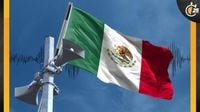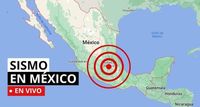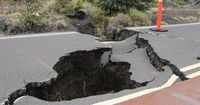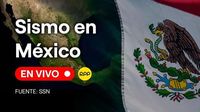On April 14, 2025, Mexico experienced a series of earthquakes, as confirmed by the Servicio Sismológico Nacional (SSN). The country, situated in the Cinturón de Fuego, is known for its seismic activity, with over 90 earthquakes recorded annually that exceed 4.0 on the Richter scale. This geological phenomenon is a result of the interaction among five tectonic plates: the North American, Cocos, Rivera, and Pacific plates.
The most notable tremor occurred at 04:58 AM local time, registering a magnitude of 3.5. Its epicenter was located 14 kilometers northwest of Rio Grande, Oaxaca, at a depth of 26.2 kilometers. Just minutes earlier, at 04:40 AM, another earthquake of magnitude 3.2 struck 10 kilometers east of Coyuca de Benitez, Guerrero, with a depth of 17.6 kilometers.
Additional seismic events throughout the morning included:
- A magnitude 3.1 earthquake 67 kilometers northwest of San Felipe, Baja California, at 04:37 AM.
- A magnitude 3.1 quake occurred 38 kilometers southwest of San Felipe, Baja California, at 04:25 AM.
- A slightly stronger tremor of 3.6 magnitude was reported 25 kilometers northwest of GPE Victoria, Baja California, at 04:05 AM.
- At 04:04 AM, a magnitude 3.9 earthquake was registered 7 kilometers northwest of El Rosario, Sinaloa, with a depth of 15 kilometers.
These earthquakes are part of a broader pattern in Mexico, where the SSN reports that the country experiences approximately 90 significant tremors each year. This high frequency is attributed to its geographical location in a region where tectonic plates frequently collide and shift, leading to the release of energy in the form of seismic waves.
In addition to the tremors mentioned above, the SSN also reported several smaller earthquakes earlier in the day, including:
- A magnitude 3.2 quake 12 kilometers east of Pinotepa Nacional, Oaxaca, at 03:36 AM.
- A magnitude 3.6 earthquake 9 kilometers southwest of CD Ixtepec, Oaxaca, at 03:34 AM.
- A magnitude 3.5 tremor 10 kilometers west of GPE Victoria, Baja California, at 03:27 AM.
- A magnitude 3.5 quake 39 kilometers south of Salina Cruz, Oaxaca, at 03:19 AM.
As with previous earthquakes, residents are reminded of the importance of preparedness. The SSN provides guidelines on what to do before, during, and after an earthquake. Key recommendations include:
- Staying calm and avoiding panic.
- Moving away from windows and heavy furniture that could fall.
- Seeking shelter under sturdy furniture if unable to exit a building.
- Using text messages instead of calls to avoid overloading phone lines.
- Not using elevators during or immediately after an earthquake.
The SSN also emphasizes the significance of having an emergency backpack ready, which should include essentials such as water, non-perishable food, a flashlight, and first aid supplies.
In the wake of these recent seismic activities, it is crucial for residents to remain vigilant and informed. The SSN continuously updates its reports, allowing citizens to stay abreast of the latest developments in seismic activity across the country.
Historically, Mexico has experienced some of the most significant earthquakes in recorded history. For instance, the catastrophic earthquake of September 19, 1985, which had a magnitude of 8.1, resulted in widespread destruction and loss of life. Such events underscore the necessity for ongoing education about earthquake preparedness and response.
In conclusion, as Mexico navigates its seismic landscape, the resilience and preparedness of its citizens are vital in mitigating the impacts of future earthquakes. The SSN remains a crucial resource for monitoring and informing the public about seismic activity, ensuring that safety remains a priority.








